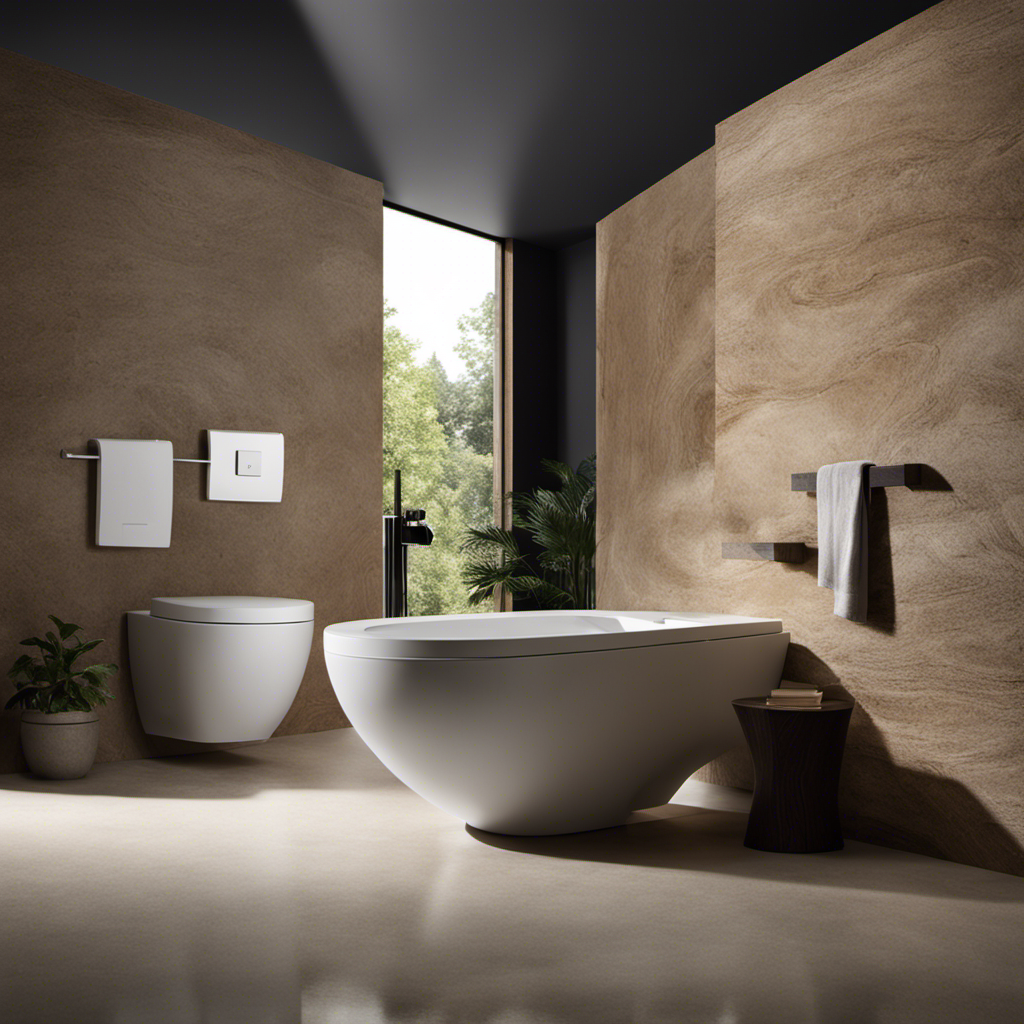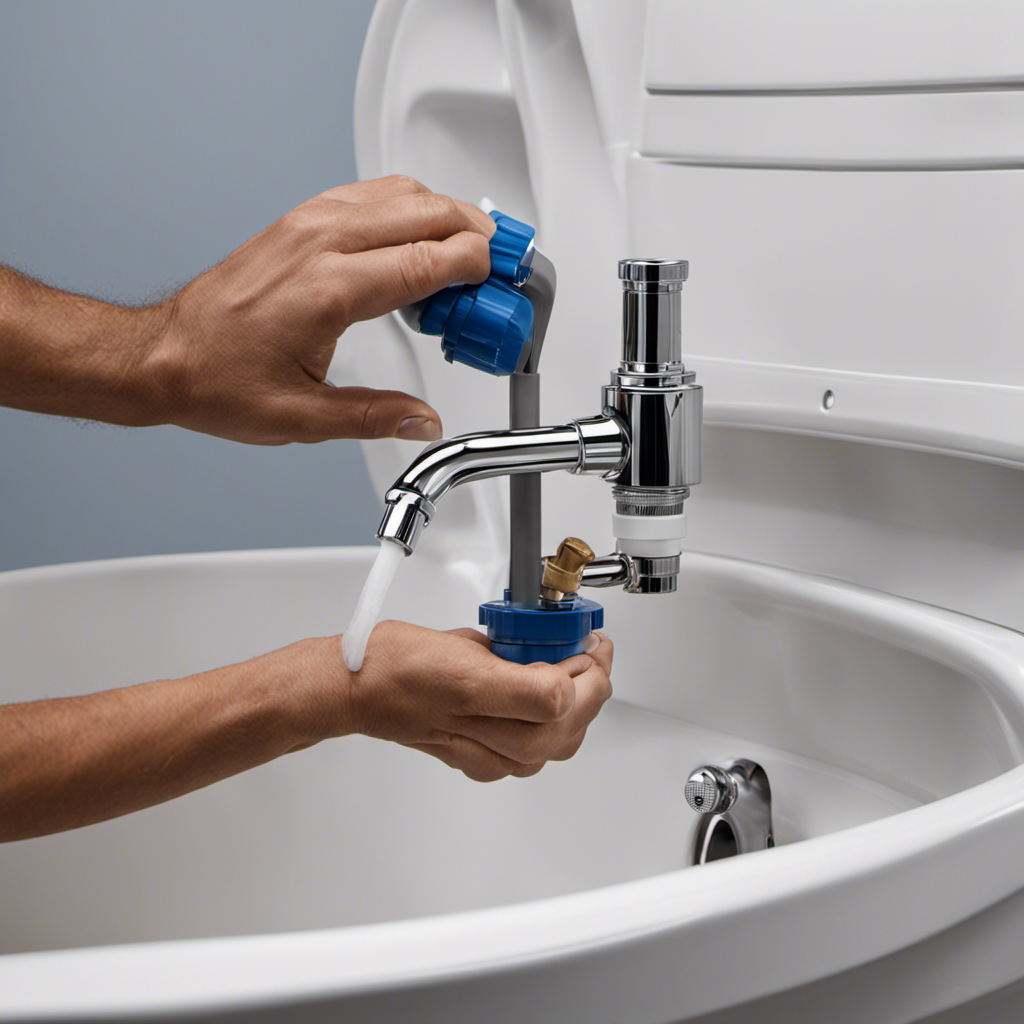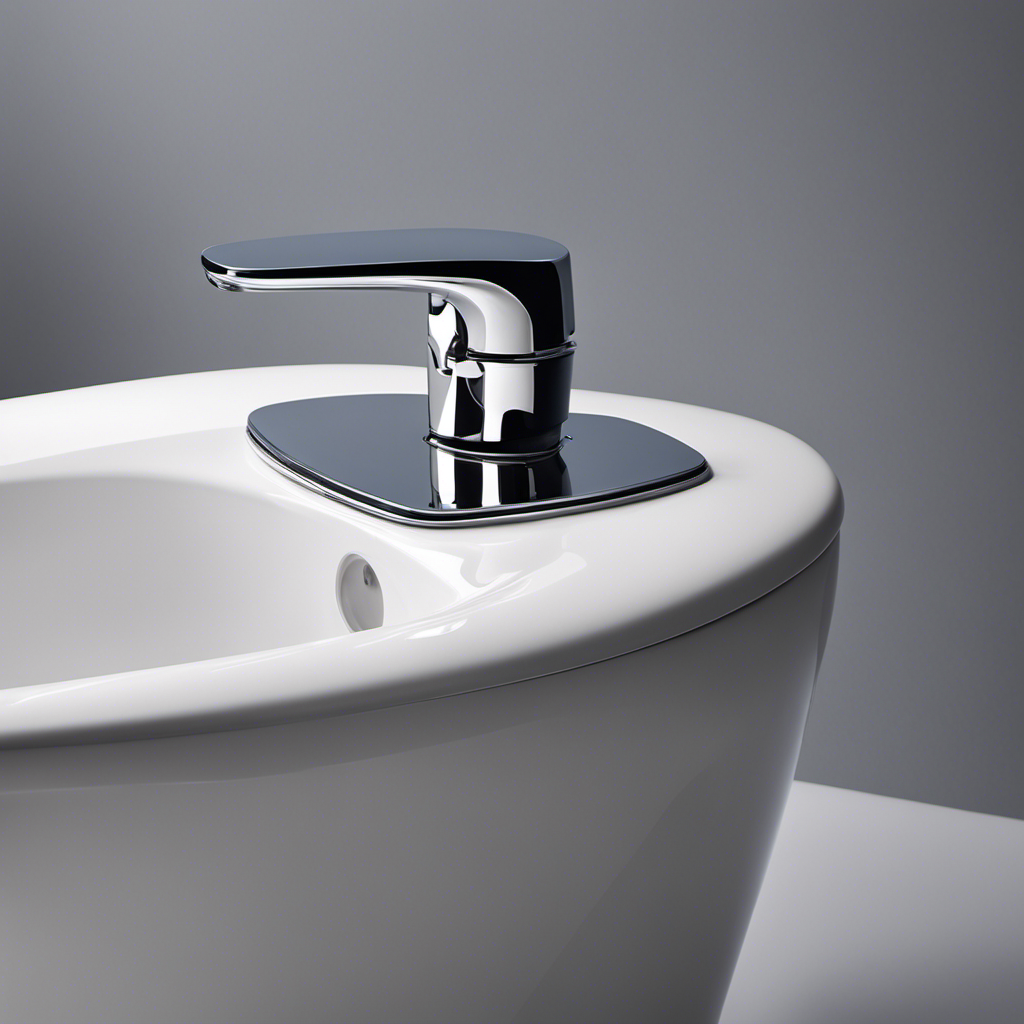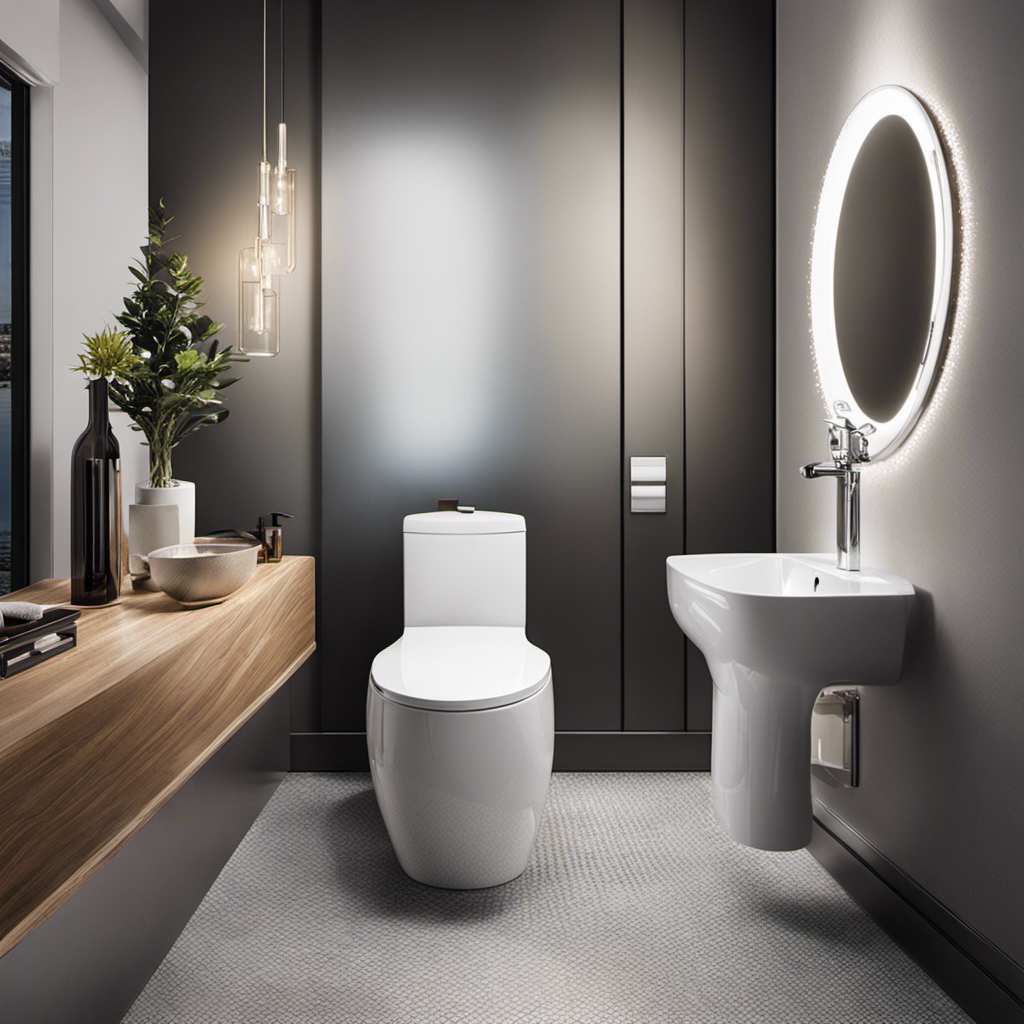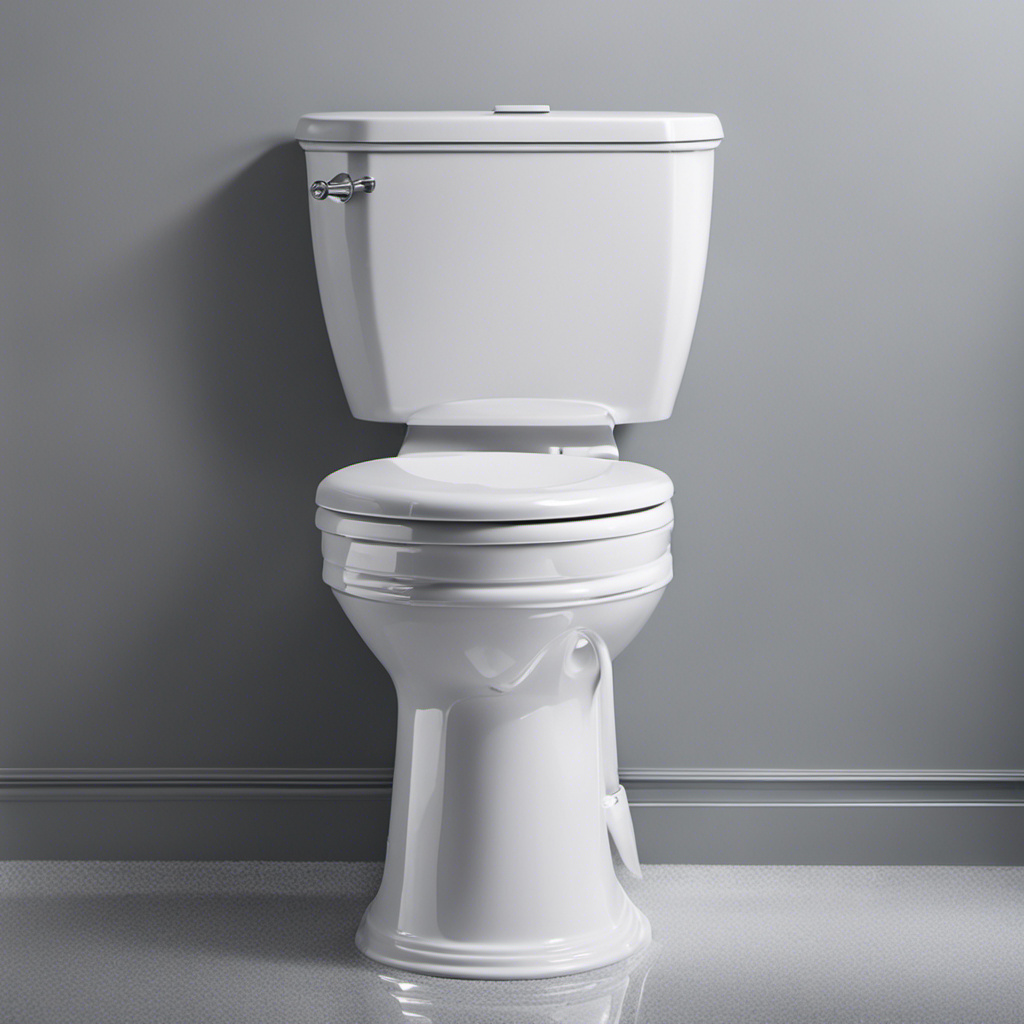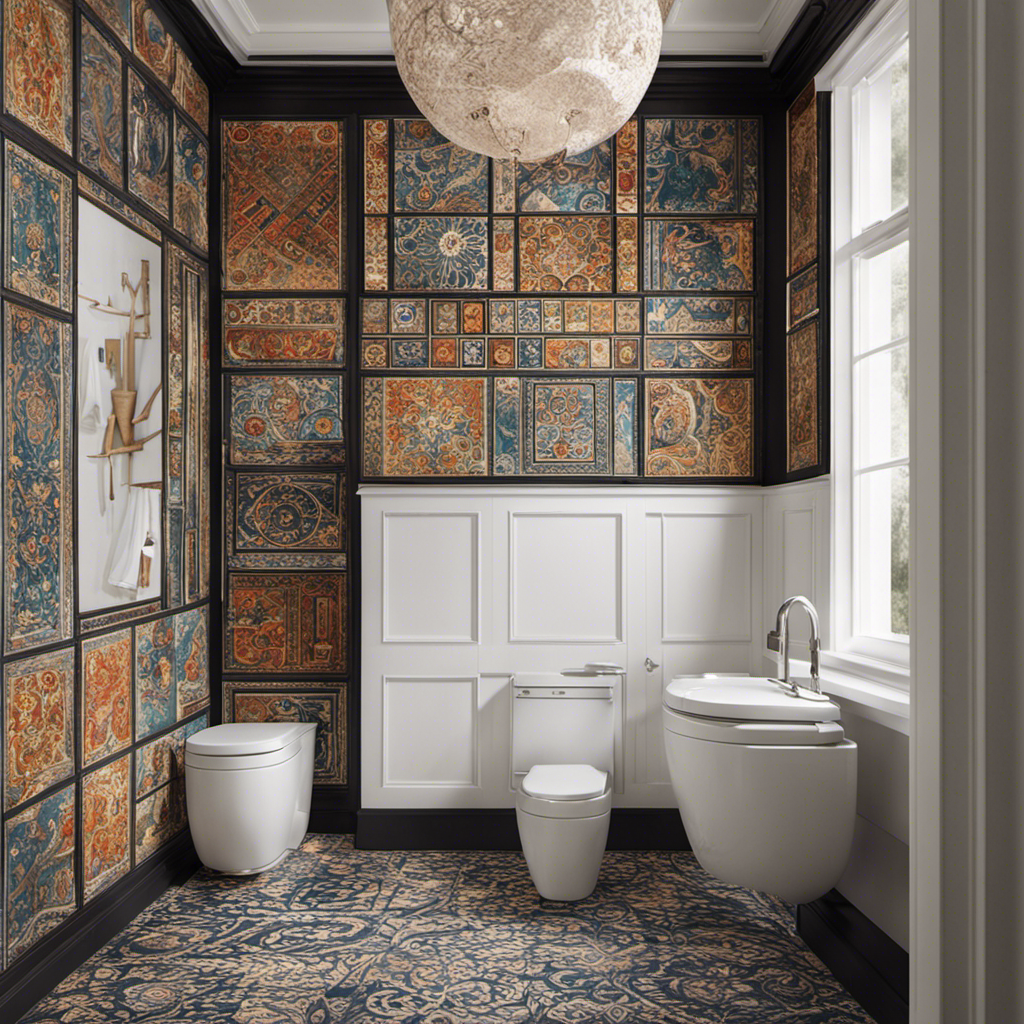I’ve always found it fascinating how something as simple as a toilet has evolved over the centuries.
From ancient latrines to modern efficiency, the flush toilet has come a long way.
It’s hard to imagine a time when people used basic latrine systems that expelled waste into a hole in the ground.
But thanks to inventors like Sir John Harrington and Alexandar Cummings, we now have flush toilets that use water to safely dispose of waste.
In this article, we’ll explore the history and advancements of the flush toilet, and how it has impacted our lives.
Key Takeaways
- Early civilizations used various latrine systems, with the Minoans of Crete credited with the first flushable toilet that used rainwater to clean out waste.
- Sir John Harrington invented the first flush toilet in 1596, called Ajax, which used levers and weights to open and close a valve.
- In the 20th century, advancements such as the American Standard Company’s Champion toilet with strong flushing action and Kohler Co.’s wash-down toilet with a built-in sink in the tank improved bathroom technology.
- Modern flush toilets consist of a bowl and tank, using at most 1.6 gallons of water per flush and ensuring the safe disposal of waste before it reenters the water supply.
Early Latrine Systems
I find it fascinating that early civilizations like the Mesopotamians and the Indus Valley civilization used simple hole-in-the-ground latrine systems for their bathroom needs.
These ancient societies had their own unique sanitation practices, which provide valuable insights into historical sanitation. The Mesopotamians, for instance, constructed pits in their homes where waste would accumulate. This waste was then disposed of by burying it in fields or empty spaces.
Similarly, the Indus Valley civilization had an elaborate underground drainage system that carried waste away from their settlements. These early latrine systems demonstrate the resourcefulness and ingenuity of these civilizations in managing their waste.
Understanding these historical sanitation practices allows us to appreciate the advancements in hygiene and sanitation that have been made over time.
Inventions and Innovations
Sir John Harrington revolutionized bathroom technology in 1596 by inventing the first flush toilet. His toilet, known as Ajax, featured a flush valve mechanism that used levers and weights. This mechanism allowed the valve to open and close, enabling water to flow and flush waste away. Harrington’s invention was a significant advancement in flushing technology.
However, it wasn’t until 1775 that further advancements were made in flush toilet design. Alexander Cummings patented his toilet design, which incorporated a cistern and a lever mechanism. However, Cummings faced challenges with cleaning and the lack of a flushing mechanism.
Despite these setbacks, Cummings’ invention introduced the concept of using an overflow pipe and a float valve. These additions improved usability and water pressure. These early flush toilet innovations paved the way for future advancements in flushing technology.
Advancements in the 20th Century
John Jacob Guggenheim founded the American Standard Company in 1925, introducing advancements in bathroom technology during the 20th century. One of the key developments during this time was the integration of water-saving technologies into toilet designs. Companies like American Standard and Kohler Co. made significant strides in creating toilets that used less water per flush. For example, American Standard introduced the Champion toilet, which featured a strong flushing action while using up to four gallons of water per flush. Kohler Co. took it a step further by introducing the wash-down toilet, which had a built-in sink in the tank, allowing users to wash their hands without leaving the bathroom. These innovations not only improved efficiency but also promoted better sanitation practices. The table below highlights some of the advancements in bathroom technology during the 20th century.
| Year | Advancement |
|---|---|
| 1925 | American Standard Company founded |
| 1932 | Kohler Co. introduces the wash-down toilet |
| … | … |
These advancements in water-saving technologies and the integration of technology into toilet design have had a significant impact on our daily lives. Not only do they help conserve water, but they also enhance hygiene and contribute to a more sustainable future.
Modern Flush Toilets
One key component of the modern flush toilet is the tank, which holds water to help push waste through pipes to treatment plants. This tank plays a crucial role in the water efficiency of the toilet.
Unlike older models that required up to six gallons of water per flush, modern flush toilets use at most 1.6 gallons of water per flush. This reduction in water usage is important for conserving water resources and promoting sustainability.
Additionally, the treatment process that follows the flushing of waste ensures the safe disposal of waste before it reenters the water supply. This process involves the removal of harmful bacteria and contaminants, making the water safe for reuse or discharge.
Overall, modern flush toilets have made significant advancements in terms of water efficiency and the treatment of waste.
Impact and Importance
I believe it’s fascinating to consider the impact and importance of the flush toilet on hygiene and quality of life. The flush toilet has had a profound effect on both environmental sustainability and public health.
Here are three key reasons why:
-
Improved Sanitation: The flush toilet revolutionized sanitation practices by efficiently removing waste from homes and communities. This helped to significantly reduce the spread of diseases and improve public health.
-
Water Conservation: Modern flush toilets have become more water-efficient, using less water per flush. This promotes environmental sustainability by conserving water resources and reducing the strain on water treatment facilities.
-
Proper Waste Disposal: The flush toilet ensures that waste is properly disposed of through sewage systems and treatment plants. This prevents pollution of natural water sources and protects the environment.
Overall, the flush toilet has played a crucial role in promoting proper sanitation, conserving water, and safeguarding public health and the environment.
Frequently Asked Questions
How Did the Early Civilizations Dispose of Waste Before the Invention of Flush Toilets?
Before the invention of flush toilets, early civilizations used ancient sanitation methods to dispose of waste. These methods included expelling waste into holes in the ground or using water to flush waste into drainage systems. The historical evolution of sanitation eventually led to the invention of the flush toilet.
What Were Some of the Challenges Faced by Early Inventors of Flush Toilets?
The challenges faced by early inventors of flush toilets included difficulties in cleaning, lack of a flushing mechanism, and issues with clogs and leaks. Despite these challenges, innovations like the lever mechanism and improved water pressure led to modern, efficient flush toilets.
How Has the Design of Flush Toilets Evolved Over Time?
The design of flush toilets has evolved over time through design improvements and technological advancements. From ancient latrines to modern efficiency, toilets have become more efficient, using less water per flush and incorporating innovative features for improved hygiene.
What Are Some of the Environmental Benefits of Modern Flush Toilets?
Modern flush toilets offer significant environmental benefits. They conserve water by using only 1.6 gallons per flush, reducing water consumption. Additionally, they have improved flushing mechanisms that minimize odors, ensuring a more pleasant and hygienic bathroom experience.
How Has the Flush Toilet Impacted Public Health and Sanitation?
The flush toilet has had a profound impact on public health and sanitation. It has significantly improved hygiene, reducing the spread of diseases caused by improper waste disposal. It is one of the most important public health benefits in history.
Conclusion
In conclusion, the evolution of the flush toilet has revolutionized the way we maintain hygiene and dispose of waste.
From the simple latrine systems of ancient civilizations to the advanced flush toilets of today, we have come a long way.
Just like a river flowing smoothly, these modern efficiency toilets ensure the safe and efficient disposal of waste, protecting our water supply and promoting a healthier environment.
The progress in bathroom technology, comparable to a blooming flower, has undoubtedly improved our quality of life and made a significant impact on society.
